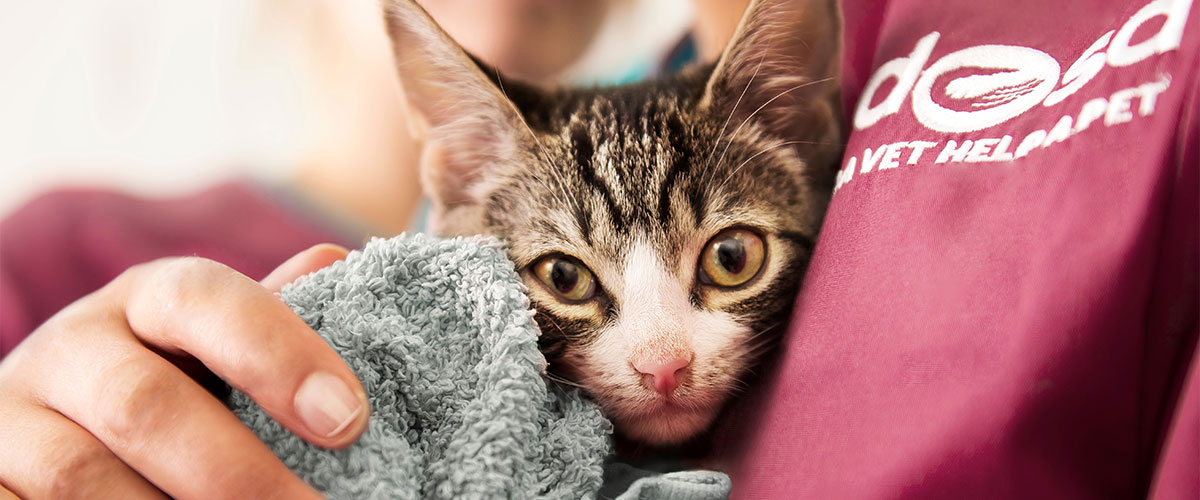Skin problems in cats
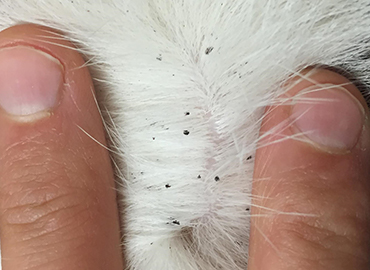
Fleas cause itchy skin and often lead to overgrooming. They tend to cause most problems around the face, neck and lower back. If your cat has fleas, it’s unlikely you will spot any, but likely that you will find flea dirt in their fur (see image).
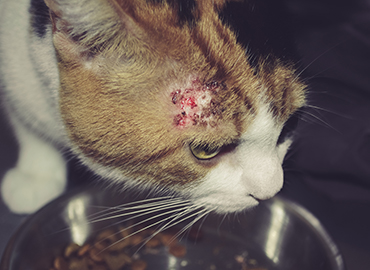
If your cat is allergic to fleas they will have an extreme reaction each time they're bitten. It's likely that their skin will become intensely itchy, and that they will develop a rash around their head, neck and lower back.
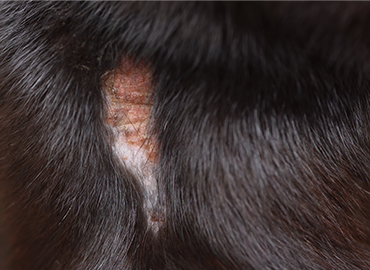
Eosinophilic skin disease is a type of allergic reaction that causes patches of raised, red, swollen skin. Lesions are most common on the back of the thigh, neck, upper lip, and chin. There are three unique types of eosinophilic skin disease: plaques, ulcers and granulomas.
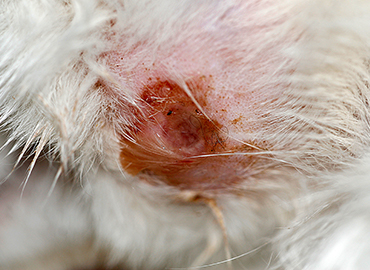
Skin infections can be caused by bacteria, and/ or yeasts. A skin infection usually causes the skin to become smelly, weepy and red.

If your cat is allergic to something they encounter regularly, they may develop red, itchy skin. This often leads to overgrooming and alopecia (fur loss).
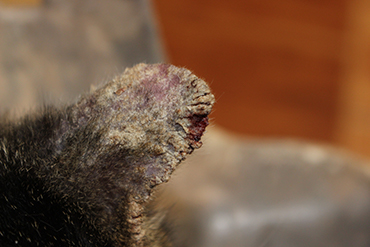
Ringworm is a fungal skin infection that causes patches of raised itchy, crusty skin. Ringworms patches can be circular or irregular.
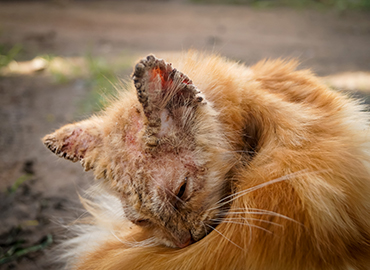
Mites and lice are quite rare in cats, (with the exception of ear mites that are common in kittens). However, when mites and lice do cause problems, they tend to cause itchy, dry crusty patches of skin that spread over the whole body.
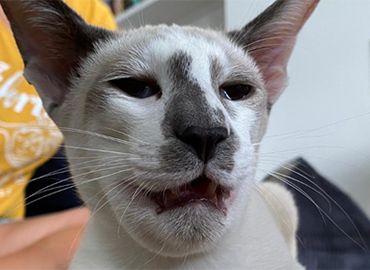
Severe allergic reactions are usually very obvious. They tend to cause significant swelling that starts around the ears, eyes, nose and mouth.
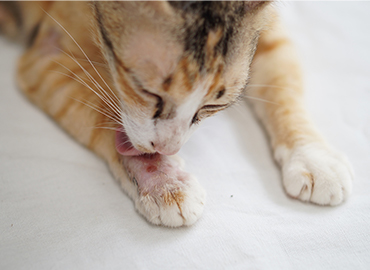
Wounds and injuries such as cat bite abscesses are often painful and become infected.
What will happen at the appointment
Your vet will examine your cat and ask you about their symptoms. To begin with, they will rule out some of the most common causes (i.e. fleas), but if your cat doesn’t improve with treatment, they may suggest tests such as:
- A food exclusion diet
- Skin scrapes
- Hair plucks
- Skin swabs
- Blood tests.
Treatment
As you would expect the treatment your cat needs will depend on the condition they are diagnosed with. Some conditions are simple to treat (such as fleas), but others (such as eosinophilic dermatitis) can be more challenging, require ongoing medication and lifestyle management. Fortunately, with the right treatment, most skin conditions can be managed successfully.
Consider insuring your cat as soon as you get them, before any signs of illness start. This will ensure you have all the support you need to care for them.
Home remedies and prevention
There are many different things you can do at home to keep your cat’s skin healthy:
- Treat for fleas - it’s important to protect your cat from fleas by keeping them up to date with regular flea treatments (most treatments are used monthly but this will depend on the product you use).
- Check your cat regularly - it’s important to check your cat’s fur and skin regularly. Keep an eye out for any changes including sore patches, scabs and dandruff.
- Diet - feed your cat a diet that suits them and gives them a shiny coat. If your pet has sensitive skin, they may benefit from a hypoallergenic diet - speak to your vet for more information.
- Skin supplements - skin supplements can help in some cases of dry, flaky skin. Use a cat-specific supplement and speak to your vet if you’re unsure which brand to use.
- Creams and lotions - it’s not advisable to use any creams or lotions on your cat until you know what is causing their skin problem.
- Prevent self-trauma - if your cat is making their skin red or sore by scratching, nibbling or excessively licking, you will need to put a buster collar on them until you see your vet. A buster collar should only ever be a short-term solution before you speak to your vet.
Published: September 2020
Did you find this page useful?
Tell us more
Please note, our vets and nurses are unable to respond to questions via this form. If you are concerned about your pet’s health, please contact your vet directly.
Thank you for your feedback
Want to hear more about PDSA and get pet care tips from our vet experts?
Sign up to our e-newsletter
Written by vets and vet nurses. This advice is for UK pets only. Illustrations by Samantha Elmhurst.

